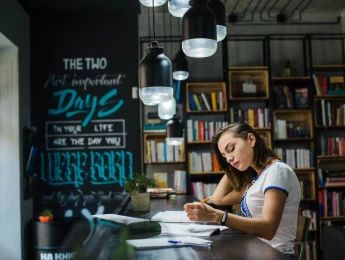- Table of Contents
- Introduction
- The History of Women in Leadership
- The Women's Leadership Gap
- Why Is It Important to Have Women in Leadership Positions?
- Diversity of Thought and Perspectives
- Enhanced Organisational Performance
- Role Models and Inspiration
- Customer and Stakeholder Satisfaction
- Reducing Gender Inequality
- Legal and Ethical Considerations
- Decision-Making Quality
- Innovation and Adaptability
- Employee Engagement and Retention
- Market Reputation
- Statistics
- The Main Challenges for Female Leaders
- Gender Bias and Stereotypes
- Lack of Access to Networks and Mentors
- Work-Life Balance
- Implicit and Explicit Discrimination
- Double Standards
- Lack of Representation
- Limited Access to Resources
- Emotional Labour
- Stereotype Threat
- How to Empower Women in Leadership Positions
- Promoting Inclusive Workplaces
- Addressing Implicit Bias
- Mentoring and Sponsorship
- Flexible Work Policies
- Education and Awareness
- Leadership Accountability
- Final Word
Introduction
In pursuing gender equality, one crucial area that has gained significant attention is the representation of women in leadership positions. Throughout history, women have made remarkable strides in various fields, challenging societal norms and defying stereotypes. However, despite progress, the underrepresentation of women in leadership roles persists, highlighting the urgent need for change. In this blog post, we will delve into the history of women in leadership, discuss the gender leadership gap, explore the importance of having women in leadership positions, identify the main challenges female leaders face, and provide actionable strategies to empower women in leadership roles.
The History of Women in Leadership
The history of women in leadership is a tale of resilience, perseverance, and breaking barriers. Despite facing numerous obstacles, pioneering women have made substantial contributions to society. From Cleopatra, the powerful Queen of Egypt, to Joan of Arc, who led the French army, women have showcased their leadership abilities throughout history. However, societal norms and systemic biases hindered women's progress in leadership positions for centuries.
It wasn't until the late 19th and early 20th centuries that the suffrage movement gained momentum, advocating for women's right to vote and participate in politics. Leaders like Susan B. Anthony and Emmeline Pankhurst played pivotal roles in these movements, ultimately leading to significant advancements in women's rights and paving the way for future female leaders.
In the aftermath of the suffrage movement, the mid-20th century witnessed a gradual but transformative shift in women's roles within the workplace. World War II, in particular, became a turning point, compelling women to take on jobs traditionally reserved for men as they left for the battlefield. This period saw the emergence of women as capable leaders and decision-makers in various industries. However, despite their contributions during the war, the immediate post-war era often pushed women back into domestic roles, reinforcing traditional gender norms.
Era | Key Developments | Notable Figures |
Ancient Times | Women leaders in early civilisations | Cleopatra, Queen of Egypt |
Suffrage Movement | Fight for women's right to vote | Susan B. Anthony, Emmeline Pankhurst |
Post-War Era | Women's workforce integration begins | Rosie the Riveter, Trailblazing Women |
1960s-1970s | Feminist movements challenge gender norms | Betty Friedan, Gloria Steinem |
Modern Era | Women breaking through the corporate glass ceiling | Indra Nooyi, Angela Merkel |
Table 1: History of women in leadership
It wasn't until the feminist movements of the 1960s and 1970s that the fight for women's rights gained renewed momentum. These movements sparked conversations about gender equality, challenging deeply ingrained societal attitudes and prejudices. Legislative changes, such as Title IX in the United States, aimed to eliminate gender discrimination in education, opening doors for women to pursue higher education and careers in previously male-dominated fields. As a result, more women entered the workforce, gradually climbing the corporate ladder and assuming leadership positions.
In recent decades, the global business landscape has witnessed a surge in women leaders breaking through the glass ceiling. Women continue to prove their mettle in leadership roles, from CEOs of Fortune 500 companies to heads of state. The journey of women in leadership, although marked by challenges, is a testament to their resilience, determination, and ability to shatter societal norms. Today, the ongoing efforts to promote gender equality and create inclusive environments further pave the way for future generations of women leaders, ensuring their contributions are acknowledged, celebrated, and valued globally.
The Women's Leadership Gap
Despite the notable strides made by women, a leadership gap between genders still exists. Women remain underrepresented in executive positions, corporate boardrooms, and political offices. This gap is a result of various systemic, societal, and cultural factors, including gender bias, lack of opportunities, and limited access to mentorship and sponsorship.
Studies consistently show women occupy only 35% of senior leadership positions, while men dominate, with 65% representation in all leadership roles. This disparity not only perpetuates gender inequality but also hampers diversity and innovation within organisations and society as a whole. Bridging the leadership gap and creating equal opportunities for women is imperative to building a more inclusive world.
Why Is It Important to Have Women in Leadership Positions?
Having women in leadership positions is not just about achieving gender parity; it brings numerous benefits to organisations and society at large. Here are some compelling reasons why women's representation in leadership is crucial:
Diversity of Thought and Perspectives
Women's unique experiences and perspectives can lead to broader solutions and ideas. This diversity can help organisations adapt to changing market dynamics and respond to various challenges. By promoting inclusivity in leadership, companies are better equipped to tackle complex problems and create more holistic strategies.
Enhanced Organisational Performance
Gender-diverse leadership teams can bring about a wider talent pool, allowing organisations to tap into a wealth of skills and knowledge. This can lead to more efficient operations, greater innovation, and improved decision-making. The diversity of thought in leadership can foster an environment where employees feel valued and engaged, which is closely linked to higher productivity and profitability.
Role Models and Inspiration
Women in leadership roles serve as beacons of hope for aspiring female leaders. Their success stories demonstrate that gender is not a barrier to achieving high organisational positions. These role models can encourage young women and girls to pursue their ambitions and give them the confidence and motivation to overcome any challenges they may encounter on their path to leadership.
Customer and Stakeholder Satisfaction
As businesses increasingly cater to diverse customer bases, it becomes essential to have leadership teams that reflect this diversity. Women in leadership roles can better understand the needs and preferences of various customer segments, resulting in products and services that are more inclusive and aligned with the market. This understanding enhances customer satisfaction and strengthens relationships with stakeholders who appreciate a more diverse and responsive approach to business.
Reducing Gender Inequality
When women hold leadership positions, it not only signals a commitment to diversity but also reduces gender inequality within organisations. This, in turn, fosters a more inclusive and equitable workplace culture. Gender equality in leadership helps break down gender-based stereotypes and biases, making it easier for women to advance in their careers.
Legal and Ethical Considerations
In many regions, legal requirements or guidelines advocate for gender diversity in leadership. Organisations that fail to promote diversity may face legal repercussions or reputational damage. Moreover, ethical considerations underscore the importance of ensuring equal opportunities for everyone, regardless of gender and promoting fairness and social responsibility.
Decision-Making Quality
Research suggests that diverse teams, including those with women in leadership roles, tend to make better decisions. When multiple perspectives are considered, the potential for groupthink and bias is reduced, leading to more balanced and effective choices. This can be particularly crucial when dealing with complex, sensitive issues requiring well-rounded, thoughtful solutions.
Innovation and Adaptability
Women often bring a fresh perspective to problem-solving and innovation. Their diverse experiences can lead to creative solutions that might not have been considered otherwise. This adaptability is crucial in today's fast-changing business environment, where companies must constantly evolve to stay competitive.
Employee Engagement and Retention
When women have opportunities to advance into leadership positions, it can boost overall employee morale and job satisfaction. This, in turn, can lead to better retention rates, as employees are more likely to stay with organisations that value diversity and provide equal growth opportunities for all.
Market Reputation
Companies committed to gender diversity in leadership tend to have a more positive reputation in the market. This can attract customers, investors, and partners who appreciate and support organisations that promote social responsibility and inclusivity. A positive reputation can lead to long-term business success and sustainability.
Statistics
According to a comprehensive survey conducted by the Pew Research Center Social and Demographic Trends, 2,250 adult women were rated higher or equal to men in seven out of the eight primary leadership traits assessed. Notably, half of the respondents regarded women as more honest than men, while only 20% believed the opposite. Regarding intelligence, 38% recognised women as smarter, while only 14% attributed greater intelligence to men. The survey, as mentioned in Natural HR, also revealed that women were consistently ranked higher in traits such as compassion, extroversion, and creativity.
The Main Challenges for Female Leaders
Women face unique challenges when pursuing leadership roles. These obstacles often stem from gender bias, societal expectations, and systemic barriers. Here are some of the main challenges that female leaders encounter:
Gender Bias and Stereotypes
Overcoming gender bias and stereotypes is an ongoing challenge for female leaders. These biases can undermine their confidence and hinder their ability to lead effectively. Women often navigate a complex landscape where they must continually prove themselves and break free from these limiting stereotypes. This constant scrutiny can be mentally and emotionally exhausting, impacting their career progression.
Lack of Access to Networks and Mentors
Establishing a professional network and finding mentors or sponsors is essential for career growth. However, women may face barriers to accessing these critical support systems. They often have limited opportunities to connect with influential figures in their field, which can slow down their career advancement and deprive them of valuable guidance and opportunities for development.
Work-Life Balance
Balancing the demands of a leadership role with personal and family responsibilities is a unique challenge for women. Societal expectations and traditional gender roles can add additional pressure, making it more challenging for female leaders to manage their work-life balance effectively. This can lead to feelings of guilt or the need to constantly prove their commitment to their careers, potentially affecting their advancement opportunities.
Implicit and Explicit Discrimination
Discrimination against women in leadership roles can manifest subtly and overtly. Unequal pay, limited access to promotions, and exclusion from decision-making processes are just a few examples of the obstacles women face. These challenges can be demoralising and frustrating, as women often have to work harder to prove their worth and fight against systemic discrimination within organisations.
Double Standards
Female leaders may be subject to double standards that their male counterparts do not face. For example, they may be criticised for being too assertive or accommodating, and striking the right balance can be challenging. These double standards can make it difficult for women to be perceived as effective leaders and can undermine their confidence in their leadership abilities.
Lack of Representation
The scarcity of women in leadership positions can make it difficult for aspiring female leaders to see a path forward. The absence of role models and mentors who share similar experiences can make the journey to leadership more daunting. This lack of representation can dishearten and limit women's aspirations and ambitions.
Limited Access to Resources
Women may have limited access to resources and opportunities for skill development, professional development, and training compared to their male counterparts. This lack of access to resources can hinder their ability to build the necessary skills and qualifications for leadership roles.
Emotional Labour
Women in leadership roles often find themselves handling emotional labour, such as managing team dynamics, conflicts, and employee well-being, to a greater extent than their male colleagues. This can be emotionally draining and add an extra layer of complexity to their leadership responsibilities.
Stereotype Threat
The fear of confirming negative stereotypes about women's leadership abilities can create additional stress and performance anxiety for female leaders. This stereotype threat can affect their confidence and decision-making, impacting their leadership effectiveness.
How to Empower Women in Leadership Positions
To empower women in leadership, concerted efforts are needed from individuals, organisations, and society as a whole. Here are actionable strategies to foster gender equality and empower women in leadership:
Promoting Inclusive Workplaces
Establishing inclusive workplaces is not just about diversity quotas but fostering a genuine culture of acceptance and equality. In addition to transparent hiring practices, organisations should actively encourage diverse voices in decision-making processes. This can involve creating platforms where employees can share their perspectives openly, ensuring that every team member feels valued and heard. Inclusive workplaces also involve recognising and celebrating diverse cultural, social, and gender backgrounds, creating an environment where everyone feels a sense of belonging and can thrive.
Addressing Implicit Bias
Beyond awareness, addressing implicit bias requires ongoing efforts. Organisations can implement regular training programmes that challenge biases and stereotypes. It's essential to create a workplace environment where individuals are encouraged to confront their biases openly and learn from one another. Moreover, promoting diversity in leadership roles can serve as a powerful antidote to implicit bias, showcasing the effectiveness of diverse leadership teams in action.
Mentoring and Sponsorship
Encouraging women to seek mentors and sponsors is crucial, but educating both mentors and mentees about the specific challenges women face in leadership is equally important. Mentorship programmes should focus on building confidence, honing negotiation skills, and navigating workplace politics. Sponsors, on the other hand, actively advocate for women's advancement within the organisation, ensuring they are considered for high-profile projects and promotions. These relationships should be cultivated organically, emphasising mutual respect and understanding.
Flexible Work Policies
While offering flexible work arrangements is essential, creating a culture that supports employees in utilising these policies without fear of judgment or career repercussions is equally vital. Organisations can establish guidelines that encourage employees to embrace flexible work options, whether it's remote work, job-sharing, or flexible hours. Leaders should set an example by utilising these policies, promoting a culture where work is evaluated based on results rather than hours spent in the office.
Education and Awareness
Gender equality education should be an integral part of organisational culture. This education goes beyond basic awareness and delves into the nuances of gender bias, intersectionality, and inclusive leadership. Engaging in open conversations about diversity and inclusion within the organisation and the wider community can challenge existing norms and foster empathy. Encouraging men as allies is crucial; they play a pivotal role in dismantling patriarchal structures and advocating for equal opportunities, making it essential to involve them actively in these conversations.
Leadership Accountability
Organisational leaders must take a proactive stance in championing gender equality. This involves setting clear diversity goals, measuring progress transparently, and holding leaders accountable for creating an inclusive environment. Leaders should actively participate in diversity initiatives, ensuring their commitment trickles down to every level of the organisation. By leading by example, they inspire others to embrace the values of equality and empowerment, fostering a workplace where women in leadership positions can truly thrive.
Conclusion
Empowering women in leadership positions is not just a matter of fairness; it is an imperative for progress and success in all spheres of society. We can build a more inclusive and equitable future by addressing the historical barriers, bridging the leadership gap, and empowering women. Organisations, leaders, and individuals must actively champion gender equality and take tangible steps to create a world where women can thrive as leaders, contributing their unique perspectives, skills, and talents to drive positive change. Together, we can break down barriers and create a more inclusive world that benefits us all.
Finally, embracing effective leadership skills is paramount in pursuing a more inclusive world, especially for women aiming to impact their careers significantly. Our course, ‘Effective Leadership for Women,’ is meticulously crafted to empower aspiring female leaders with the tools and knowledge needed to excel in today's competitive landscape. Through expert-led sessions, real-world case studies, and interactive workshops, participants will gain invaluable insights into leadership strategies tailored to their unique challenges. From mastering negotiation techniques to honing communication skills, our course equips women with the confidence and expertise to break barriers and rise to leadership positions with authority. Join us on this transformative journey, where you'll unlock your full potential, expand your professional network, and be part of a supportive community of trailblazing women. Don't just dream of a leadership role; leap, and let us help you realise your aspirations. Enrol now and step confidently into a future where your leadership empowers not just you, but also the world around you.























